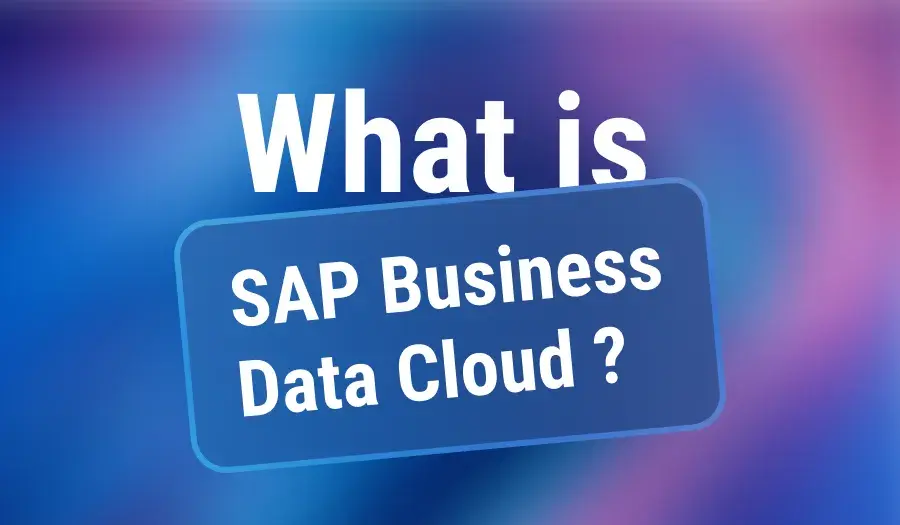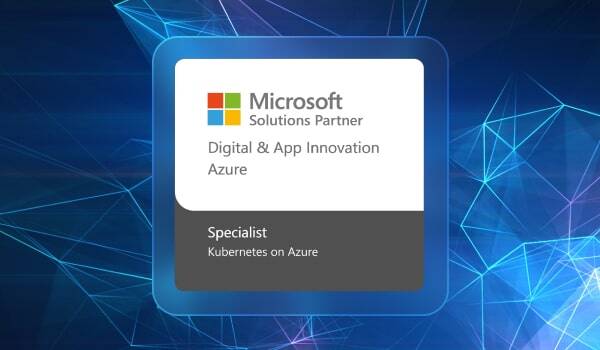How can your business benefit from SAP Business Suite? Is it time to upgrade to newer versions? LeverX answers.
How SAP Business Suite Works and Why Businesses Need It: A Complete Guide to the System
Claude Shannon, the founder of information theory, once said, “Information is something that can be used to remove uncertainty.” And he was right. It's difficult for modern businesses to achieve efficiency without accurate data and proper analysis. To meet these demands, the IT market offers a wide array of solutions and software. SAP ERP systems stands out among them.
The first version of SAP’s ERP system was released in 1972. Since then, it has continuously evolved and improved. Now, the world has SAP Business Suite and SAP S/4HANA. How has SAP's ERP system changed over time? Should you switch to the latest version? Let’s explore.
SAP Business Suite: A Brief Overview
SAP Business Suite unifies key enterprise processes into a cohesive system. From financial management to supply chain operations, CRM to analytics, SAP Business Suite enables businesses to control and optimize every step.
Originally designed for small and medium-sized businesses, SAP has since upgraded its Business Suite to handle tasks of any complexity. Its main advantage over bulky solutions for large corporations lies in its ease of use, flexibility, and adaptability to specific business needs.

All SAP Business Suite components are integrated within a single ecosystem, allowing real-time data exchange between modules. This architecture enables rapid response to changes and informed decision-making.
From SAP R/1 to SAP S/4HANA
The SAP Business Suite's history prioritizes continuous development, improvement, and adaptation to new business requirements and technological advancements. Each version introduced new capabilities, from basic financial tools to advanced AI-based analytics and cloud technologies. All these features make business process management more efficient. Here’s a look at the key milestones in this evolution:
1. SAP R/1 (1972)
The first version of the SAP system was released in 1972 under the name SAP R/1. It was a single-user, mainframe-based system focused primarily on accounting and financial management. At the time, there were no other solutions like SAP R/1, which led to its implementation by 40 reference clients within 2.5 years, including well-known brands such as Burda, Schulze-Pharma, Hugo Mann, Reemtsma, Roth-Händle, and Linde.
2. SAP R/2 (1979)
Following the launch of the first solution, SAP gained experience working with databases and IBM’s interactive management systems. This prompted a rethinking of the SAP software, and the company began developing R/2 with international market needs in mind.
SAP R/2 was the first solution where multiple users could work simultaneously on a single mainframe. The system introduced modules for materials management, production planning, and inventory control. Additionally, it featured a client-server architecture that improved scalability and performance.
3. SAP R/3 (1992)
Despite the success of SAP R/2, the developers continued their drive for innovation, leading to the release of SAP R/3 in 1992. This solution was built on a three-tier architecture, consisting of:
- Presentation layer
- Application layer
- Database layer
The system included modules for finance, human resources, sales, materials management, and other business processes. SAP R/3 integrated various company processes, helping businesses simplify management and increase operational transparency.
4. SAP ERP 6.0 (2006)
In 2006, SAP introduced enhanced functionality and new tools for its ERP system. SAP ERP 6.0 was released with Enhancement Packages, which eliminated the need for a full system reboot when adding new features. Updates could be performed in stages. The system also introduced service-oriented architecture, allowing for seamless integration with other systems.
5. SAP Business Suite 7.0 (2009)
Three years after the release of SAP ERP 6.0, SAP launched SAP Business Suite 7.0. In addition to SAP ERP, this version included additional components such as SAP CRM, SAP SCM, SAP SRM, and SAP PLM. This solution covered all key aspects of business management, from finance and supply chains to customer relationships and product management. The complete integration of business processes became a major advantage of this version.
6. SAP Business Suite 7.31 (2010) and 7.40 (2013)
These versions of SAP Business Suite introduced new functionalities, along with improvements to the user interface and system performance. These enhancements made the system more user-friendly and continued to add innovative features, increasing the flexibility and scalability of the system.
7. SAP Business Suite 7.50 (2015)
With version 7.50, SAP introduced the ability to integrate with new platforms and technologies, including more advanced analytics. System updates ensured that it met the needs of large enterprises requiring the processing of vast amounts of data.
8. SAP S/4HANA (2015 and later)
In 2015, SAP introduced SAP S/4HANA, built on the SAP HANA database and a completely new architecture designed for high-speed data processing and enhanced analytics. Businesses now had the option to choose between cloud-based or on-premise deployment. Like its predecessor, SAP S/4HANA unified all business processes and introduced a new interface that simplified system interaction. The improved analytics, supply chain management, finance, and logistics capabilities made SAP S/4HANA one of the most sought-after solutions for business management.
Choosing an ERP System: How to Make the Right Decision
For a long time, SAP Business Suite was the leading system for business management. However, with the introduction of SAP S/4HANA and the growing demand for flexibility and advanced analytics, it had to step aside. To better understand the evolution of ERP systems and the differences between them, let’s compare SAP Business Suite with SAP ECC and SAP S/4HANA.
SAP Business Suite vs. SAP ECC (SAP ERP Central Component) vs. SAP S/4HANA
SAP Business Suite, SAP ECC (formerly known as SAP R/3), and SAP S/4HANA are different versions of ERP solutions from SAP. Each system has distinct differences and offers varying levels of functionality and architecture.
| Parameter | SAP Business Suite | SAP ECC | SAP S/4HANA |
| System Type | A comprehensive ERP solution with extended functionality | A core component of the ERP system | Modern ERP solution based on the SAP HANA database |
| Modules | Includes CRM, SCM, SRM, PLM, and more | Key modules: FI, CO, MM, SD, HR | Key modules: FI, CO, MM, SD, HR with enhanced capabilities |
| Database | Traditional relational databases | Traditional relational databases | SAP HANA database |
| Architecture | Multilayer architecture | Multilayer architecture | Three-tier architecture optimized for real-time processing |
| Interface | Traditional interface | Traditional interface | Intuitive SAP Fiori interface |
| Functionality | Wide range of business process management capabilities | Focused on finance and logistics management | Innovative features optimized for business process management and automation |
| Analytics | Limited analytics capabilities | Limited analytics capabilities | Built-in real-time analytics |
| Flexibility | High, due to modular architecture | Limited, compared to SAP Business Suite | Highly flexible and scalable |
| Integration | Full integration of all business processes | Primarily ERP-level integration | Easy integration with IoT, machine learning, and other modern technologies |
| Support | Support and updates for all modules | Limited support, focused on core functions | Full support and updates for all components and modules |
SAP Ends Support for SAP Business Suite 7: What It Means for Users
SAP has officially announced the end of mainstream support for SAP Business Suite 7 in 2027. What changes will businesses face if they decide to continue using this solution?
No More Updates
The end of support means that SAP will no longer introduce new features or release updates for this system. Without modern tools, companies may struggle to meet market demands and maintain the required level of performance and analytics.
Security Risks
As new methods of cyberattacks constantly increase, it’s necessary to implement up-to-date security measures. Without regular updates, companies risk being unable to protect themselves and their data from cyber threats.
Need for Migration
To access updates and new technologies from SAP, companies will need to consider migrating from SAP Business Suite 7 to SAP S/4HANA. Transitioning to a newer solution will help businesses stay current and competitive.
Why Is SAP S/4HANA a Better Option for Modern Business Needs?
Nine out of ten companies that use outdated ERP systems struggle with data management and analytics. Without updates for SAP Business Suite, your ability to respond quickly to market changes and optimize business processes will be significantly hindered.
Migrating to SAP S/4HANA brings substantial improvements in production management and unlocks capabilities that SAP Business Suite simply cannot offer.
| Criteria | SAP Business Suite | SAP S/4HANA |
| Deployment Flexibility | Primarily on-premise deployment | Options for both on-premise and cloud deployment |
| Scalability | Supports large enterprises | Ideal for businesses of all sizes |
| Innovation Support | Limited to traditional technologies | Supports the latest technologies, including AI and machine learning |
| User Experience | Complex interface requiring training | Intuitive SAP Fiori-based interface |
| Updates and Support | Limited support with outdated versions | Regular updates and long-term support |
SAP Business Suite’s Role in Modern Business Processes and What to Expect in the Future
The evolution from SAP R/1 to S/4HANA demonstrates how technology adapts to meet business needs. SAP Business Suite remains relevant for companies looking to maintain process efficiency but may not be ready for a full transition to SAP S/4HANA. However, the period in which SAP Business Suite can continue to support efficient processes is limited by SAP’s end of support, which will conclude in 2027.
The end of support is already a compelling reason to consider migration, but to make a well-informed decision, it's important to factor in your business goals and long-term strategy.
LeverX, a trusted SAP partner with over 20 years of experience, offers comprehensive services for implementing and configuring SAP solutions, helping businesses thrive and evolve.
FAQ
How Do We Choose Between SAP Business Suite and SAP S/4HANA?
Consider the following factors:
- Your business needs more modern features and capabilities, such as enhanced analytics, mobile access, and improved data management. If your business requires these features, SAP S/4HANA is the preferred choice.
- The need for higher performance and real-time data analysis.
- The importance of long-term support and updates from SAP.
What Should Be Done After SAP Business Suite 7 Support Ends?
- Conduct an analysis of your current systems and processes to understand which components and features are critical for your business. Assess whether SAP Business Suite 7 can still meet these needs.
- If SAP Business Suite 7’s capabilities no longer align with your requirements, consider migrating to SAP S/4HANA or another modern SAP solution.
- Develop a migration plan.
- Perform thorough testing and plan for a smooth implementation.
- Ensure employee training and preparation for the new system to minimize downtime.
Which Components Are Important for Business?
The component selection depends on your business needs. You can choose modules for finance, production, procurement, sales, and distribution, as well as analytics, human resources management, and mobile solutions.
How useful was this article?
Thanks for your feedback!
.webp)


